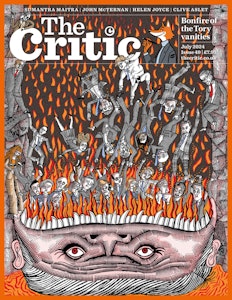The pointlessness of pintlessness
There is no case for slashing the drink-driving limit
On Tuesday, the British Medical Association (BMA) called on the next government to slash the drink-driving limit from 80mg of alcohol per 100ml of blood to 50mg per 100ml. Reducing the limit would bring the UK in line with most of Europe, but it would be lower than most of North America and plenty of other countries.
It goes without saying that driving drunk is an incredibly stupid and dangerous activity that kills around 260 people a year in Britain. Those who do it should be punished to the full extent of the law. Most countries accept that motorists can drink a small amount of alcohol and still be fit to drive. The only question is how much? In 1967, the UK erred on the side of caution by introducing a limit of 80mg of alcohol per 100ml of blood which amounts to roughly a pint and a half of beer, although that will vary depending on a person’s gender and weight, and on how quickly you drink it. Few people would argue that a motorist will be incapacitated by drinking such a modest amount of alcohol, but would there be benefits from lowering the limit?
Fortunately, this is a question that can be answered with empirical evidence. In 2014, Scotland lowered the limit to 50mg of alcohol. What happened next has been evaluated in three peer-reviewed studies, one written by public health academics and two written by economists. They all found that lowering the limit had no impact on the number of road accidents, casualties or fatalities in Scotland. The most rigorous of these studies, published in the Journal of Health Economics, concluded that the lower limit “had no effect on road traffic accidents, even in circumstances that are more likely to be associated with greater alcohol consumption (such as weekends, multiple vehicle crashes, urban areas, and local authorities with a large concentration of premises) or among individuals who may experience heavier drinking (such as young adults and men).”
The study by public health academics — published in The Lancet — not only concluded that the lower limit failed to reduce road traffic accidents, but found evidence of a seven per cent rise in accidents in Scotland relative to England and Wales. Clearly disappointed with these findings, the authors suggested that the policy had been a flop because it was “insufficiently enforced or publicised”, but this was a cope. If Scottish drivers had not obeyed the law, there would have been an increase in drink-driving convictions (since the number of people drinking above the limit would have mechanistically increased), but there wasn’t. This, combined with the fact that pubs sales fell slightly, indicate that people did change their behaviour to comply with the law, but it had no effect on the number of drink-driving collisions because the law only affected people who were no danger to anyone in the first place.
… why is the BMA wasting its time lobbying for a policy that achieves nothing apart from damaging the pub trade?
With such strong evidence from Scotland, why is the BMA wasting its time lobbying for a policy that achieves nothing apart from damaging the pub trade? For this militant trade union, damaging the pub trade may be reason enough, but it also targets two villains of the modern public health lobby: drinkers and motorists. In Scotland, cutting the drink-drive limit was just one of a series of anti-alcohol policies introduced by the SNP in the 2010s, the most notable being minimum unit pricing which the BMA also wants England to introduce despite deaths from alcohol in Scotland recently hitting a 14 year high. The Scottish government also banned multi-buy discounts on alcohol, a policy which a subsequent evaluation concluded has “failed to impact upon the volume of alcohol purchased”. The BMA nevertheless wants a similar law against so-called junk food.
On Wednesday, Newcastle City Council banned new food outlets from opening near schools where more than 10 per cent of children are classified as “obese” under the government’s ridiculous definition, i.e. nearly everywhere. There have been dozens of studies looking at the question of whether children who live near a fast food outlet are more likely to be obese. Taken together, they strongly indicate that there is no association whatsoever and yet this zombie policy continues to stagger on thanks to virtue-signalling local councillors and regional public health directors who have nothing better to do.
One of the self-serving myths of the “public health” racket is that it is evidence-based. It is not. It is vibes-based. Insofar as it has a motivating principle, it is the insatiable desire for control combined with a strong antipathy towards the private sector.
Defending the right of people to drink a full pint of beer before driving is not the hill I am prepared to die on, but if it’s going to damage the pub trade and make life somewhat more miserable for people in the countryside while achieving absolutely nothing, why is it even being considered?
Enjoying The Critic online? It's even better in print
Try five issues of Britain’s newest magazine for £10
Subscribe














